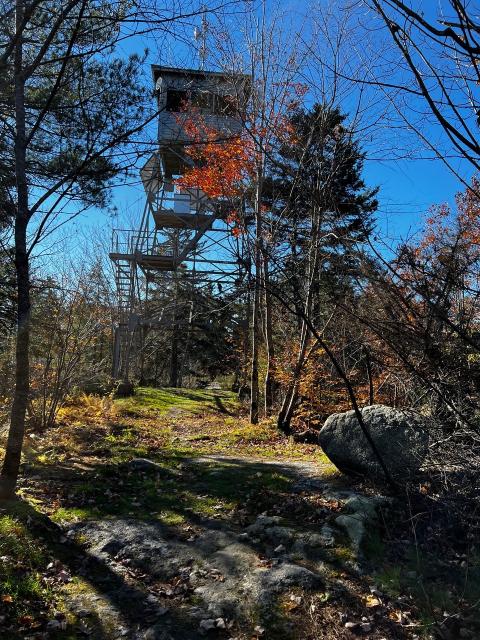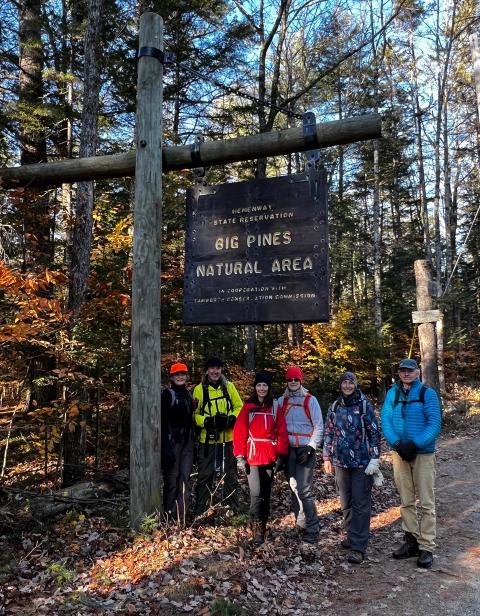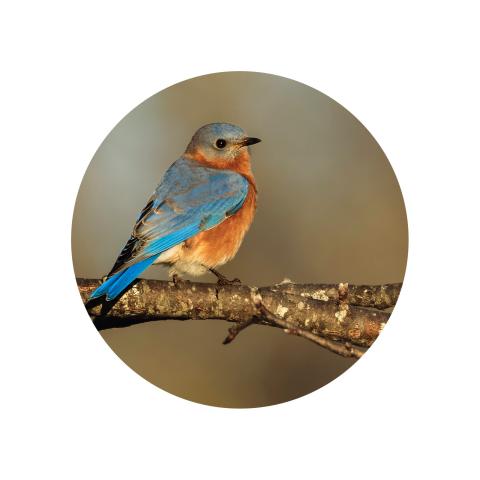Towering Trees in Tamworth
One of the finest places in New England to see towering Eastern white pine trees is in Tamworth, N.H at the Big Pines Natural Area. One champion white pine is 150-feet tall and has a circumference of over 15 feet! You risk straining your neck to look at the tops of these giant trees. Some of the hemlocks in this forest are estimated to be over 250 years old.
Walking in a cathedral-like forest with numerous white pine and hemlock over 130 feet tall is a star attraction. The forest at Big Pines is a mixture of white pine, hemlock, red spruce, yellow birch, and maples on the north side of Great Hill.
Some might ask if Big Pines Natural Area is an old-growth forest. Forest ecologists differentiate two types of old-growth forests. A primary or virgin forest is a forest that was never logged or significantly disturbed by human activity. The second type is a secondary or second-growth forest that has reached an age and structural composition that gives it old-growth forest characteristics. Big Pines is likely the latter. We found barbed wire embedded in some trees, indicating that these pines and hemlock grew up in an old pasture. Barbed wire has been around since 1874, although the dates of this wire are unknown. I consider the Big Pines Natural Area an old-growth forest.
Big Pines Natural Area has three hiking trails to explore. The Tamworth Conservation Commission expertly maintains these trails; you can download the trail map for all three here
- The Easy Walker Nature Trail is a third of a mile long and starts close to the parking area and parallels the Swift River. A downloadable interpretive guide is available with details on trees, plants and other natural features.
- The Betty Steele Trail starts after crossing the Swift River gorge on a rugged bridge with railings. Betty Steele was one of the founders of the Tamworth Conservation Commission and a well-known botanist. We suggest you follow the trail uphill, passing by many giant hemlocks and the enormous white pine on the right side of the trail. Take a left at the junction with the Peg Steele trail and follow the loop back to the bridge, a little over a mile distance. You will see several large tip-up mounds from trees that have fallen over. Check out the fine silty soil that these trees were growing on. This pit and mound topography and large woody material on the forest floor are characteristics of an old-growth forest.

Great Hill Fire Tower, build by the CCC in 1934 and maintained by the Tamworth Conservation Commission - The Peg King Spur Trail ascends Great Hill to a 35-foot tall steel fire tower built by the Civilian Conservation Corps in 1934. The view of the Sandwich Range and Mt Chocorua from the tower's cab, which is open to the public, is marvelous, especially in Autumn. The Peg King Spur Trail starts at a sharp right turn at the junction of the Betty Steele Trail, about a half-mile uphill from the bridge. The trail quickly ascends the north side of Great Hill and passes through more large hemlocks and red oaks near the top. The Peg King Spur Trail is only 0.6 miles long but does climb nearly 400-feet to the 1,270-foot high summit. The combined hiking distance of all three trails is about 2.5-miles and well worth it.
Hemenway State Forest History
While walking among these forest giants is quite inspirational, the history of the couple behind this forest is equally impressive. Augustus and Harriet Hemenway of Boston donated Hemenway State Forest. Augustus Hemenway (1853-1931) was born into great wealth and practiced great philanthropy. Augustus graduated from Harvard in 1875 and worked in the commercial shipping industry. Augustus and Harriet Lawrence married in 1881, started purchasing land in Tamworth in 1898, and within five years had purchased nearly 2,000 acres of land and a country estate.
Harriet Lawrence Hemenway (1858-1960) was a prominent Boston socialite and a legendary advocate for wildlife conservation. She and her cousin Minnie Hall founded the Massachusetts Audubon Society in 1896. Hemenway and Hall deserve credit for stopping the slaughter of wild birds for the hat trade. This conservation victory was 24 years before women were even allowed to vote! Harriet went on to help establish the National Audubon Society and continued to take an active role in wildlife conservation and philanthropy.
Augustus Hemenway died in 1931, and his heirs donated nearly 2,000 acres to the State of NH. Hemenway State Forest is one of 218 State Reservations totaling over 170,000-acres that the Department of Forest and Lands manages. I view Hemenway State Forest as one of the finest gems in the entire New Hampshire State Forest system.
During the Great Depression, a Civilian Conservation Corps (CCC) camp worked on Hemenway State Forest. The 117th Company of the CCC established a tent camp on June 5th, 1933. The CCC built the Great Hill Fire Tower, a ski trail on Great Hill, and completed numerous conservation and improvement projects here and at Crawford Notch State Park. The camp was marked by a tragedy in December 1933 when a hit and run driver struck a CCC truck, and four CCC enrollees died due to their injuries. The site of the CCC camp is used today by the Boy Scouts, something that the Hemenways stipulated when they donated the land to the State of NH.
Getting There
The Big Pines Natural Area (135 acres) is part of the 2,106-acre Hemenway State Forest. Parking for the Big Pines Natural Area is along a pull-off of N.H. 113A (Chinook Trail) marked by a large sign on the south side of the road. This location is 2.8-miles west of the junction of NH 113 and NH 113A in Tamworth Village.

A visit to Big Pines Natural Area in Tamworth is an inspiring way to spend a day with the family or even by yourself. Listening to the wind whispering through the pines is calming. Did you know there is a name for this? It is called Psithurism, a word of Greek origin meaning whispering. You can also experience what the Japanese call Shinrin-yoku by absorbing the forest atmosphere from the fragrance of the pines. We often use the term recreation, whose origin means restoring or creating again. Spending time in nature helps restore one’s physical and mental well-being.
“A walk in Big Pines Natural Area is an indescribable pleasure. The towering treetops seem to touch the heavens and the massive girth of their trunks boggles the mind. But there is something else special here that goes beyond the sheer size of the pines and hemlocks. It is something intangible and yet palpable: a wild and untamed feeling, a different quality of the air, a sense of ease with the living and dying of all things and the magic that is born from that cycle. If you wonder why people go to such great lengths to protect old-growth forests, I urge you to take a walk in Big Pines.” – Sarah RobbGrieco, Old-Growth Forest Network
Suggested Reading:
- Harriet Lawrence Hemenway
- Tamworth Conservation Commission: The Early Years
- What is Psithurism?
- Magnificent Dry River Old-Growth Forest is a Hidden Gem in Crawford Notch State Park
- Finding Old-Growth Forests in New Hampshire
- For a list of other old-growth forests, see Top Old-Growth Forests to Visit in New Hampshire
Find and nominate old-growth forests at Old Growth Forest Network.
The Eastern Old-Growth Forest Conference is being held September 21-23, 2023 in Moultonborough, NH.


